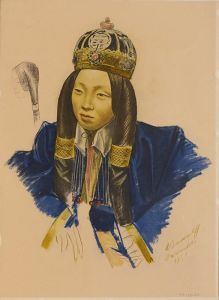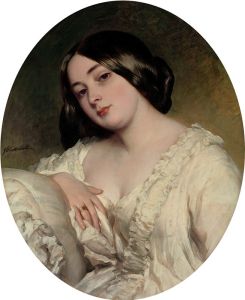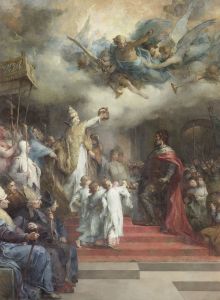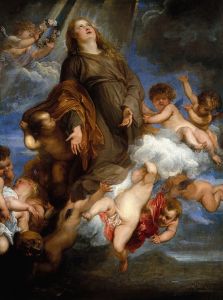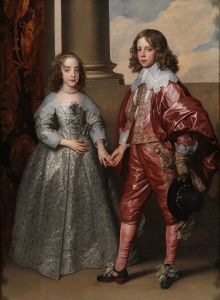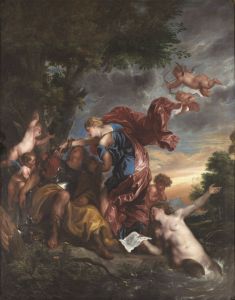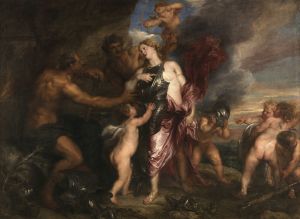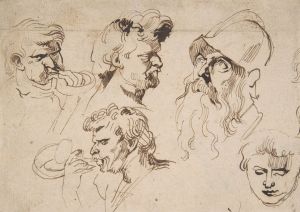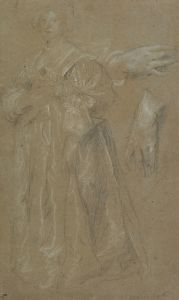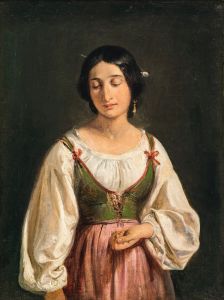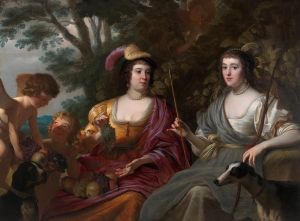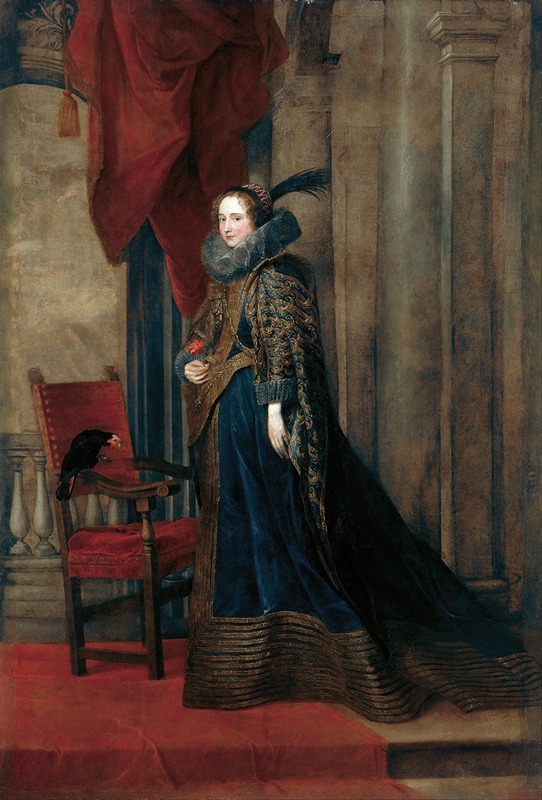
Paolina Adorno Brignole-Sale
A hand-painted replica of Anthony van Dyck’s masterpiece Paolina Adorno Brignole-Sale, meticulously crafted by professional artists to capture the true essence of the original. Each piece is created with museum-quality canvas and rare mineral pigments, carefully painted by experienced artists with delicate brushstrokes and rich, layered colors to perfectly recreate the texture of the original artwork. Unlike machine-printed reproductions, this hand-painted version brings the painting to life, infused with the artist’s emotions and skill in every stroke. Whether for personal collection or home decoration, it instantly elevates the artistic atmosphere of any space.
Anthony van Dyck, a prominent Flemish Baroque artist, is renowned for his portraits of European aristocracy. One of his notable works is the portrait of Paolina Adorno Brignole-Sale. This painting exemplifies van Dyck's skill in capturing the elegance and status of his subjects, a hallmark of his portraiture.
Paolina Adorno Brignole-Sale was a member of the Genoese nobility, a society that van Dyck was familiar with during his time in Italy. The Brignole-Sale family was influential in Genoa, and their patronage of the arts was significant, contributing to the cultural richness of the region. Van Dyck's connection with the Genoese elite provided him with numerous commissions, allowing him to develop his distinctive style characterized by a sophisticated portrayal of his sitters.
In the portrait of Paolina Adorno Brignole-Sale, van Dyck employs his characteristic use of rich color and texture to convey the opulence of the subject's attire and surroundings. The painting likely dates from van Dyck's Italian period, which lasted from 1621 to 1627. During this time, he was heavily influenced by the works of Titian and other Venetian masters, which is evident in his use of color and composition.
Van Dyck's portraits are known for their psychological depth, and this work is no exception. Paolina is depicted with a serene yet commanding presence, her gaze meeting the viewer's with a sense of confidence and poise. The artist's attention to detail is apparent in the intricate rendering of her clothing and jewelry, which not only highlights her wealth and status but also serves to enhance her individuality.
The background of the portrait is typically understated, a technique van Dyck often used to ensure that the focus remains on the sitter. This approach allows the viewer to appreciate the nuances of Paolina's expression and the subtle interplay of light and shadow on her face. Van Dyck's mastery in capturing the delicate balance between realism and idealization is evident, as he presents Paolina not just as a symbol of her social standing but as a person with distinct character and presence.
The portrait of Paolina Adorno Brignole-Sale is a testament to van Dyck's ability to blend the grandeur of Baroque art with a personal touch that brings his subjects to life. His work had a lasting impact on portrait painting, influencing artists across Europe and setting a standard for capturing the essence of the aristocracy.
Today, van Dyck's portraits, including that of Paolina Adorno Brignole-Sale, are celebrated for their artistic excellence and historical significance. They offer a glimpse into the lives of the European elite during the 17th century, providing valuable insights into the cultural and social dynamics of the time. The painting remains an important piece in the study of Baroque portraiture and continues to be admired for its beauty and craftsmanship.






